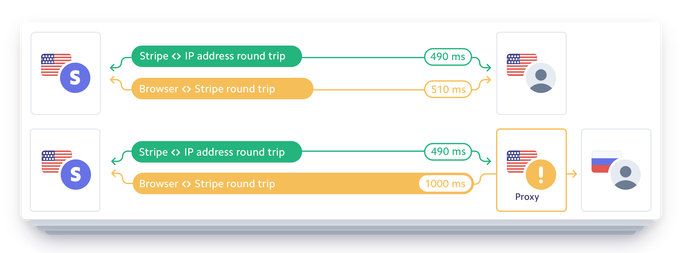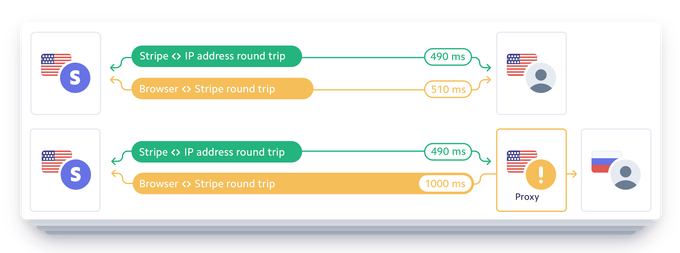Cybersecurity continues to be a growing focus and problem in the digital world, and now Stripe is launching a new paid product that it hopes will help its customers better battle one of the bigger side-effects of data breaches: online payment fraud. Today, Stripe is announcing Radar for Fraud Teams, an expansion of its free AI-based Radar service that runs alongside Stripe’s core payments API to help identify and block fraudulent transactions.
And there are further efforts that Stripe is planning in coming months. Michael Manapat, Stripe’s engineering manager for Radar and machine learning, said the company is going to soon launch a private beta of a “dynamic authentication” that will bring in two-factor authentication and start to see Stripe’s first forays into considering how to implement biometric factors in payments. Fingerprints and other physical attributes have become increasingly popular ways to identify mobile and other users.
The initial iteration of Radar launched in October 2016, and since then, Manapat tells me that it has prevented $4 billion in fraud for its “hundreds of thousands” of customers.
Considering the wider scope of how much e-commerce is affected by fraud — one study estimates $57.8 billion in e-commerce fraud across eight major verticals in a one-year period between 2016 and 2017 — this is a decent dent, but there is a lot more work to be done. And Stripe’s position of knowing four out of every five payment card numbers globally (on account of the ubiquity of its payments API) gives it a strong position to be able to tackle it.
The new paid product comes alongside an update to the core, free product that Stripe is dubbing Radar 2.0, which Stripe claims will have more advanced machine learning built into it and can therefore up its fraud detection by some 25 percent over the previous version.
New features for the whole product (free and paid) will include being able to detect when a proxy VPN is being used (which fraudsters might use to appear like they are in one country when they are actually in another) and ingesting billions of data points to train its model, which is now being updated on a daily basis automatically — itself an improvement on the slower and more manual system that Manapat said Stripe has been using for the past couple of years.

Meanwhile, the paid product is an interesting development.
At the time of the original launch, Stripe co-founder John Collison hinted that the company would be considering a paid product down the line. Stripe has said multiple times that it’s in no rush to go public — and statement that a spokesperson reiterated this week — but it’s notable that a paid tier is a sign of how Stripe is slowly building up more monetization and revenue generation.
Stripe is valued at around $9.2 billion as of its last big round in 2016. Most recently, it quietly raised another $44 million in March of this year, according to a Form D filing and data from Pitchbook, bringing the total to just under $500 million raised.
The Teams product, aimed at businesses that are big enough to have dedicated fraud detection staff, will be priced at an additional $0.02 per transaction, on top of Stripe’s basic transaction fees of a 2.9 percent commission plus 30 cents per successful card charge in the U.S. (fees vary in other markets).
The chief advantage of taking the paid product will be that teams will be able to customise how Radar works with their own transactions.
This will include a more complete set of data for teams that review transactions, and a more granular set of tools to determine where and when sales are reviewed, for example based on usage patterns or the size of the transaction. There are already a set of flags the work to note when a card is used in frequent succession across disparate geographies; but Manapat said that newer details such as analysing the speed at which payment details are entered and purchases are made will now also factor into how it flags transactions for review.
Similarly, teams will be able to determine the value at which a transaction needs to be flagged. This is the online equivalent of when certain purchases require or waive you to enter a PIN or provide a signature to seal the deal. (And it’s interesting to see that some e-commerce operations are potentially allowing some dodgy sales to happen simply to keep up the user experience for the majority of legitimate transactions.)
Users of the paid product will also be able to now use Radar to help with their overall management of how it handles fraud. This will include being able to keep lists of attributes, names and numbers that are scrutinised, and to check against them with analytics also created by Stripe to help identify trending issues, and to plan anti-fraud activities going forward.


